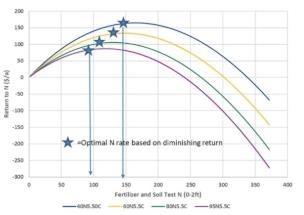
Figure 1. The influence of the prices of corn and fertilizer Nitrogen (N) on the economically optimal N rate for corn in South Dakota.
Determining an accurate yield goal is crucial for determining an accurate N rate. Yield goal, “is not the yield you want, but it is the yield you can get!” Using the Olympic yield average is the best way to determining a yield goal. One should take that last five to 10 years of yield data. Remove the obvious low or high yields and determine the average of the remaining yields. A yield trend adjustment should also be applied to the average to compensate for improved hybrids and corn management. Usually 5% is a good value to increase the average yield. The yield trend adjustment is flexible and should be determined according to local experience with yield successes or struggles.
Corn response to applied N is not even across the applied N rates. For example, at lower application rates, more bushels of corn are produced compared to higher application rates, where the incremental yield increase is diminished to a point of no further yield improvement. The price of corn and nitrogen can greatly influence the point of diminishing returns on the corn response curve for nitrogen. When corn and fertilizer N are relatively low, the effect of price is minimized. However, during a year when prices are high, the effect is much greater and is noticeable. Look how the price of N can influence the economically optimal N rate when the price of corn is held constant (Figure 1). As the price of N increases, the economically optimal N rate decreases. While we cannot know what the price of N will be next year, it is very important to understand how the level of both prices will influence corn profitability for 2022.
Source : sdstate.edu